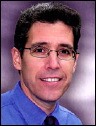May 02, 2005What's always excited me about radio frequency identification technologies is the fact that, when deployed properly, they can deliver many benefits simultaneously. In the warehouse, you can deploy RFID at dock doors to and choke points increase inventory visibility, reduce labor costs and cut shipping and receiving errors all at the same time. Similarly, our Featured Case Study this week shows how Jacobi Medical Center in New York City is using RFID wristbands and tablet PCs to reduce manual data entry, improve data accuracy and give staff more time to tend to patients—all while cutting costs (see RFID Delivers Healthy Return for Hospital). When fully deployed, the system should save Jacobi $1 million annually.
And that's just one application. Other hospitals are using RFID to track assets—wheel chairs, defribulators, incubators, even scalpels—and to keep patients safe. As the technology matures and spreads, hospitals will be able to use RFID in their complex supply chains to ensure they are ordering and receiving the right amounts of bandages, sutures, gauze and other goods.
Last week, we wrote about a new industry study, "RFID & Emerging Technologies Guide to Healthcare," that forecasts that the U.S. market for RFID and related technologies in the hospital and healthcare sector will grow to $8.8 billion by 2010 (see RFID Use in Healthcare Set to Take Off). The report explains the factors that are driving adoption, in addition to the need for greater efficiency. These include an aging population, shortages of qualified healthcare personnel and an increase in regulations. Many of these factors will affect hospitals overseas as well.
The report explains how RFID companies can reach decision makers at four levels within a typical hospital and aims to provide RFID vendors with an understanding of the RFID applications in a hospital environment. It also aims to give hospital managers the background they need to engage vendors and develop solutions that address real-world problems.
RFID Journal had no role in creating the report. It was put together by Fast Track Technologies, a healthcare consulting firm that concentrates on market positioning and sales of RFID products primarily for the asset management of medical devices, visibility of instrumentation and wireless networks in hospitals. We agreed to offer it for sale through our Web site (see RFID and Emerging Technologies Market Guide to Healthcare for more information) because we believe it will be of interest to both RFID vendors and our readers in the healthcare field.
I've long been saying that RFID's applications go far beyond simply tracking cases of consumer packaged goods in the supply chain. RFID's increasing use in hospitals is a healthy sign that senior executives in many fields are grasping this. And as hospitals such as Jacobi Medical Center prove that RFID delivers a return on investment, more hospitals will begin to take a closer look at the technology. And as more hospitals adopt, prices for RFID systems geared specifically for this industry will drop, and as prices drop, the return will become greater and it will become cost-effective for hospitals to use RFID in more ways, which will increase the benefits even more.
We're in the early stages of this virtuous circle in healthcare, as in other industries. There will be bumps in the road. Some hospitals might find the technology didn't provide the expected benefits for a particular application. Those are important lessons learned. But there will also be hospitals that show were RFID can pay off and success stories like Jacobi Medical Center will help drive adoption of RFID in hospital environments. That's good news for the RFID industry, for hospital managers—and for patients.
Mark Roberti is the founder and editor of RFID Journal. If you would like to comment on this article, click on the link below.


